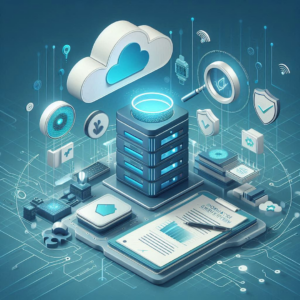Information Services in Technology
Information service play a pivotal role in transforming how organizations operate, communicate, and deliver value to customers. The integration of advanced technologies has revolutionized information services. Businesses can now harness data effectively and enhance decision-making processes. This blog delves into various aspects of information services, exploring their significance, components, and emerging trends.
1. Introduction
It involve the collection, processing, storage, and dissemination of information. These services are crucial for organizations as they facilitate informed decision-making and improve operational efficiency. The evolution of information services has been driven by the need for organizations to adapt to the rapidly changing technological landscape.

2. Key Components
The effectiveness of information services can be attributed to several key components:
Data Collection and Management
Organizations collect vast amounts of data from various sources. Effective data management practices ensure that this data is organized and accessible for analysis.
Data Processing and Analysis
Once data is collected, it must be processed and analyzed. Advanced analytics tools enable organizations to identify patterns and trends within the data.
Information Dissemination
The timely dissemination of information is critical. Information services utilize various channels, like dashboards and reports, to deliver insights to stakeholders.
Security and Compliance
Ensuring the security and compliance of information services is paramount. Implementing robust security measures protects data from breaches and misuse.
3. The Role of Cloud Computing in Information Services
Cloud computing has emerged as a cornerstone of modern information services. By leveraging cloud infrastructure, organizations can store and process large volumes of data efficiently. Key benefits of cloud computing include:
Scalability
Cloud services offer the flexibility to scale resources based on demand. This is particularly advantageous for organizations with fluctuating workloads.
Cost Efficiency
By adopting a pay-as-you-go model, organizations can reduce capital expenditures for maintaining physical servers.
Accessibility
Cloud-based information services enable remote access to data, facilitating collaboration among teams and improving productivity.
Disaster Recovery
Cloud providers typically offer robust disaster recovery solutions, ensuring data is backed up and can be restored.
4. Big Data and Its Impact on Information Services
The advent of big data has transformed information service. Organizations can now analyze vast datasets that were previously unmanageable. The impact of big data includes:
Enhanced Decision-Making
Big data analytics provides organizations with deeper insights into customer behavior and market trends.
Personalization
By analyzing customer data, organizations can tailor products and services to meet individual preferences.
Predictive Analytics
Big data enables organizations to forecast future trends and behaviors, allowing for proactive strategies.
5. Artificial Intelligence and Automation in Information Services
AI and automation are increasingly integrated into information service. Key applications of AI include:
Natural Language Processing (NLP)
NLP technologies enable organizations to analyze unstructured data, such as customer feedback.
Automated Reporting
AI-driven tools can generate reports automatically, reducing the time required for manual analysis.
Chatbots and Virtual Assistants
Organizations use AI-powered chatbots to enhance customer service and provide instant responses.
6. The Internet of Things (IoT)
The IoT has introduced new dimensions. The implications of IoT include:
Real-Time Monitoring
IoT devices provide organizations with real-time insights into operations, optimizing resource allocation.
Data-Driven Insights
The data generated by IoT devices can inform strategic decisions.
Improved Customer Engagement
Organizations can leverage IoT data to enhance customer interactions.
7. Emerging Trends
As technology evolves, several trends shape the future :
Data Privacy and Ethics
Organizations must prioritize ethical data practices and transparency.
Integration of AI and Machine Learning
The continued integration of AI will enhance the capabilities of it.
Focus on User Experience
Organizations emphasize user experience, ensuring information services are intuitive.
Decentralized Data Management
The rise of blockchain technology is enhancing security and transparency .
8. Conclusion
Information service are integral to modern organizations. They enable businesses to harness data and technology to drive innovation. By embracing cloud computing, big data, AI, and IoT, organizations can enhance their information service. This ensures they remain competitive in a data-driven world.
In summary, the landscape is dynamic and ever-evolving. By understanding and leveraging these services, organizations can unlock new opportunities for growth.
Do you like to read more educational content? Read our blogs at Cloudastra Technologies or contact us for business enquiry at Cloudastra Contact Us.